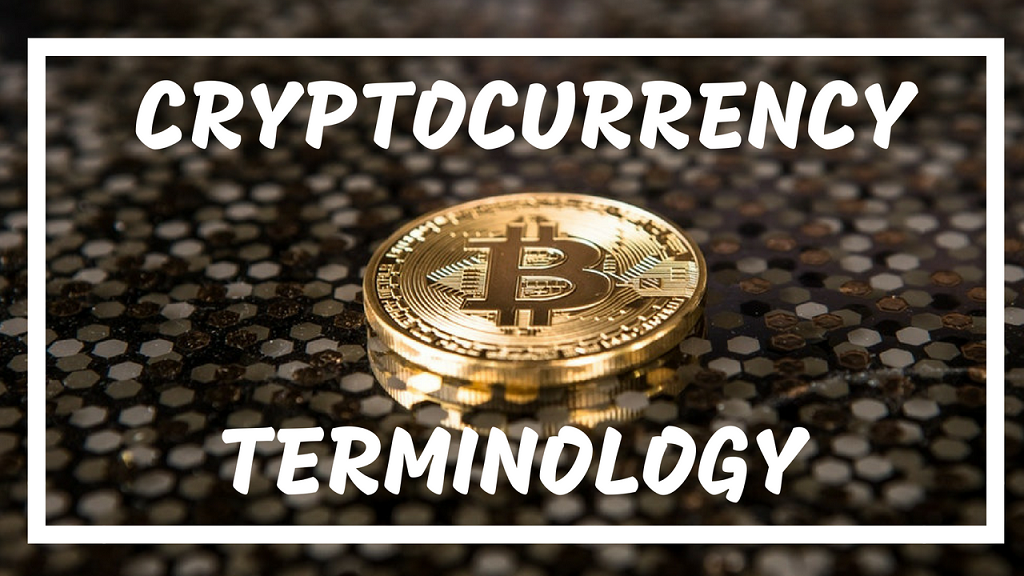A Glossary of Cryptocurrency Basics – Part 1
As exciting as it may be to get familiar with the cryptocurrency ecosystem and its features, it is also quite confusing and hard to wrap your head around. Understanding the concept of cryptocurrency and the specific language that comes with it, can be a challenge since it represents a complex mixture of technical, computing, financial and trading terms, abbreviations and slang expressions. This is why we’ve compiled a glossary of the most common crypto terms and definitions to help you understand the basics if you are just starting to learn.

As it is a long list of terminology, it will be divided into 3 parts, and here’s the first one:
ADDY – short for address, refers to a cryptocurrency public address (or key).
Airdrop – free distribution of coins or tokens to a number of user’s wallets.
Altcoins –cryptocurrencies alternative to (and created after) Bitcoin.
Ask price (also offer price or just Ask) – the minimum price the seller claims they will accept.
ATH – All-Time High.
Average down – purchasing additional cryptocurrency after the price has dropped, a strategy to reduce the overall price you’ve paid for a specific cryptocurrency.
Bag holder – an investor whose assets have become worthless (or they have decreasing value).
Bear – a bear is an investor who believes (or is able to foresee) a market or an asset value is set to go down. A bear aims to profit from the downward price movements.
Bearish – pessimistic view, an expectation that a price is going to decrease.
Bear Trap – a false signal indicating that the rising trend of asset value has turned downwards when it actually has not, in fact, it continues to increase.
Bid price –a price offered for a security also the highest price a buyer is willing to pay.
Bid-ask spread – the difference between the bid and ask price.
Bitcoin – the first cryptocurrency of its kind, a type of electronic cash, available only in digital form.
Blockchain – the technology behind Bitcoin and other cryptocurrencies. It is a digital directory, secured by cryptography, consisting of records of transactions between users of a network. The transaction entries are linked and organized in blocks which create a permanent and growing formation. The data is public, accessible to every user in the network. The transactions are validated with public and private keys and do not need a confirmation from a trusted authority.
Bull – an investor who thinks (or is able to foresee) a market or an asset value is about to rise. Such investor acts under the assumption that what they’ve purchased can be sold later on a higher price.
Bullish– optimistic view, an expectation that a price is going to increase.
Bull trap – an incorrect indication that a declining trend has reversed and is heading up when in fact it is not, it’s more likely to continue to drop.
BTD – Buy The Dip or buy low, a basic investment strategy to buy coins when their price goes down.
Cryptocurrency – a digital or virtual asset created to serve as a medium of exchange and uses cryptography to secure transactions.
(Cryptocurrency) Token – (an intricate term with several layers) – universally, the term token is a tangible representation of a fact, feeling or object and it serves as proof of an abstract or intangible thing. In cryptocurrency general terms, a token describes any digital asset or a unit of value. In a more specific sense, a token can be an encrypted string of data operating on top of a blockchain and serving as transaction unit or a secondary asset with a certain application but is not strictly a unit of cryptocurrency.
Cryptography – a process to encrypt and decrypt data. It’s used to protect information and communication from third parties by converting the data in such a form so that only those whom it was meant for to be able to see and process it.
Dapp, dApp or DApp – Decentralized application – a program running on a decentralized peer-to-peer network, rather than a single computer.
Day trading – buying and selling financial assets (even multiple times) within the same day, or multiple times
Dead Cat Bounce – a temporary recovery in price after a major collapse.
Digital wallet – the wallet is a software or a piece of hardware which can be used to hold digital assets and control transactions. ( If you want to know more about wallets, check out this article on our blog.)
Distributed Ledger (DLT – Distributed ledger technology) –a decentralized database which exists at multiple locations at the same time, can be shared and synchronized through a peer-to-peer network. A consensus-based ledger which does not necessarily require the sequence of blocks formation. A blockchain is a form of distributed ledger.
To be continued…
If you find this post useful, stay tuned for part 2 and 3.
5 Replies to “A Glossary of Cryptocurrency Basics – Part 1”